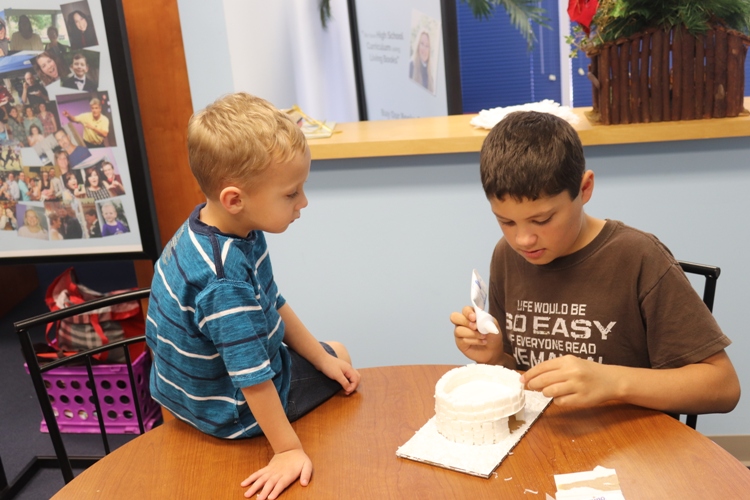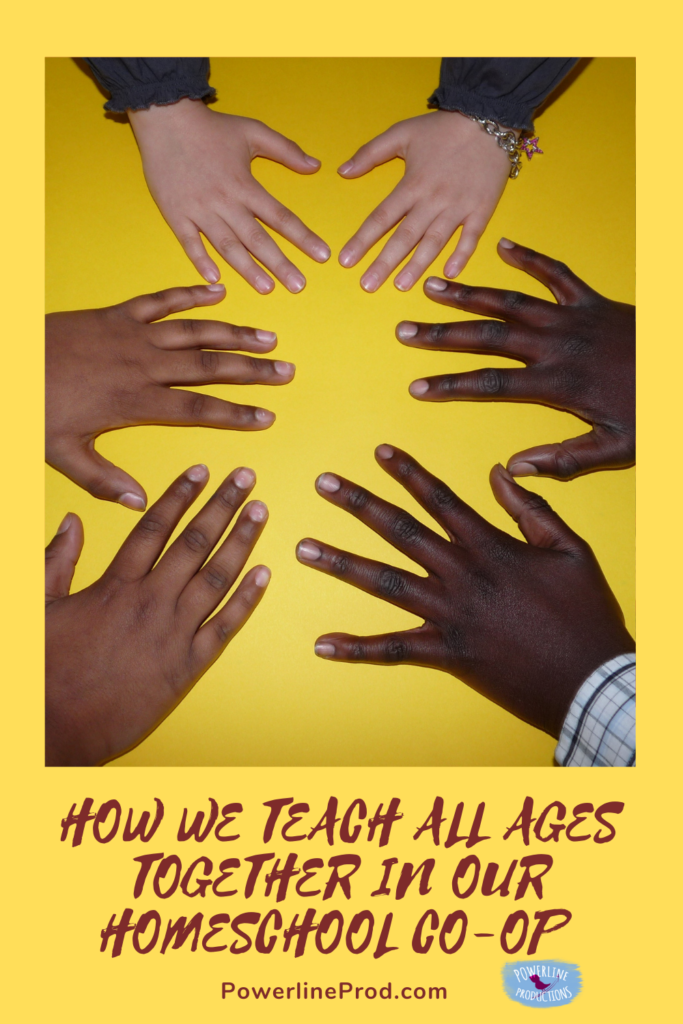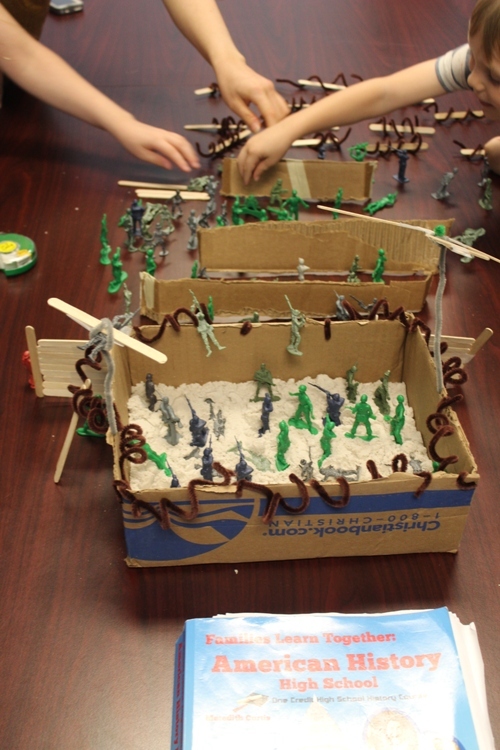Being involved in age-integrated homeschool co-ops for many years has been a blessing for my children and me. We have worked really hard to NOT imitate a traditional school setting in our co-op but to give it more of an extended family-type atmosphere.
One thing I believe in philosophically is age integration.
I believe that children thrive when they live, laugh, and learn with an assortment of other aged kids. Older children learn to nurture and show compassion. Younger children have heroes to look up to. Everyone learns to get along with others in different stages of life–it gets rid of some of the self-centeredness all humans struggle with.
It’s one thing to believe in age integration and it’s another thing to live it out in a homeschool co-op. After all, we can’t escape the fact that high schoolers are more advanced in their learning than little folks.
So, here are some of the things we’ve done together.
Same Subject; Different Books
We might all study American history. High school students use a high school text, middle schoolers a middle school text, and elementary students use age-appropriate text. Students separate to discuss textbook chapters, but come together for USA history labs where they build log cabins, make railroad track, create a radio drama, try out some of the skills Lewis and Clark used, and watch some Drive-Thru history videos together.

Hands-On Fun Together
Whether it’s cooking, baking, building, or crafting, everyone loves to get messy! We’ve acted out battles with toy soldiers and built dioramas of trench warfare for World War I. We built “skyscrapers” of boxes in teams with we studied the 20th Century. The children created the first Jamestown fort out of pretzel sticks and frosting–not a sturdy fort, but delicious.
On the science end, we made DNA molecules of Twizzlers and marshmallows. We created a soupy sample of “blood” using corn syrup, red hots, and mini marshmallows. We made ocean currents in a glass baking dish.

Drama
All ages love to act things out. When we studied 20th Century History, we made airline commercials to learn more about the Golden Age of Airlines. Each group of assorted aged kids created and filmed a commercial and we watched them together.
The teens and children have also worked together to create skits and radio dramas. Little folks love to make sound effects!
Timelines/Mapping
Mapping is something that works great for combining ages. Yes, a high school map might be neater and more elaborate, but I have been surprised at what younger children can do. Mapping is a great way to visualize WHERE things take place.
Timelines are another great way to give students the big picture. If you have easy-to-use timeline sheets and eye-catching timeline figures, all ages will be engaged. When older children finish, they can help younger students. We play group games with timeline figures where they race across the room to put someone or an event in the right place. We’ve also laid out a roll of newsprint for 30 feet and let kids sit in different spots to work on a section of time. It’s so fun to see the finished product.

Science Labs
Last year we studied Oceanography. Each age group had their own textbooks, but we did all labs together, including dissections. The children loved it! Older ones helped younger ones who were learning to wait patiently for their turn.
One thing we notice in doing science labs together is that the simple experiments still help high school students to “get it”! Small children might not fully grasp all the ramifications of cheek skin cells, but they do get to see one and they know that cell came from someone’s cheek.
There are things all ages can’t learn together, but there is so much they can! Let me know what you do in your homeschool co-op to integrate different ages.
